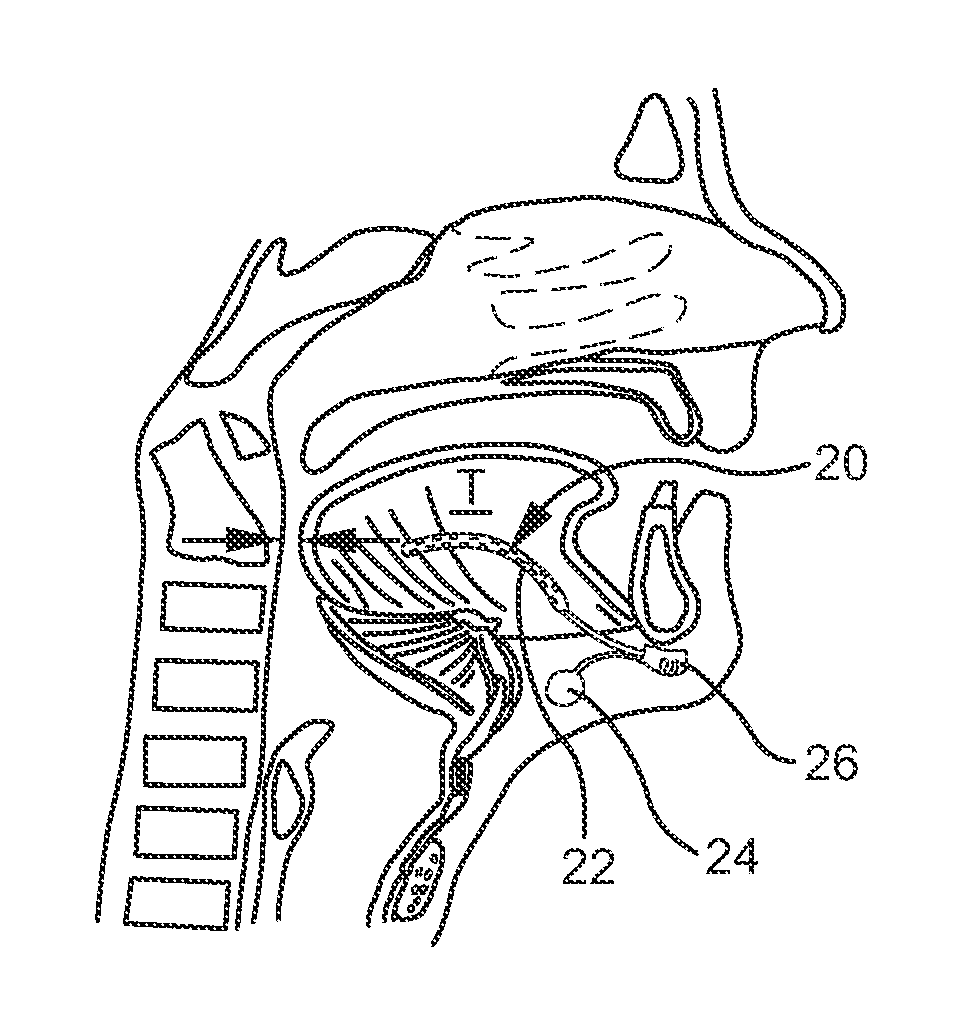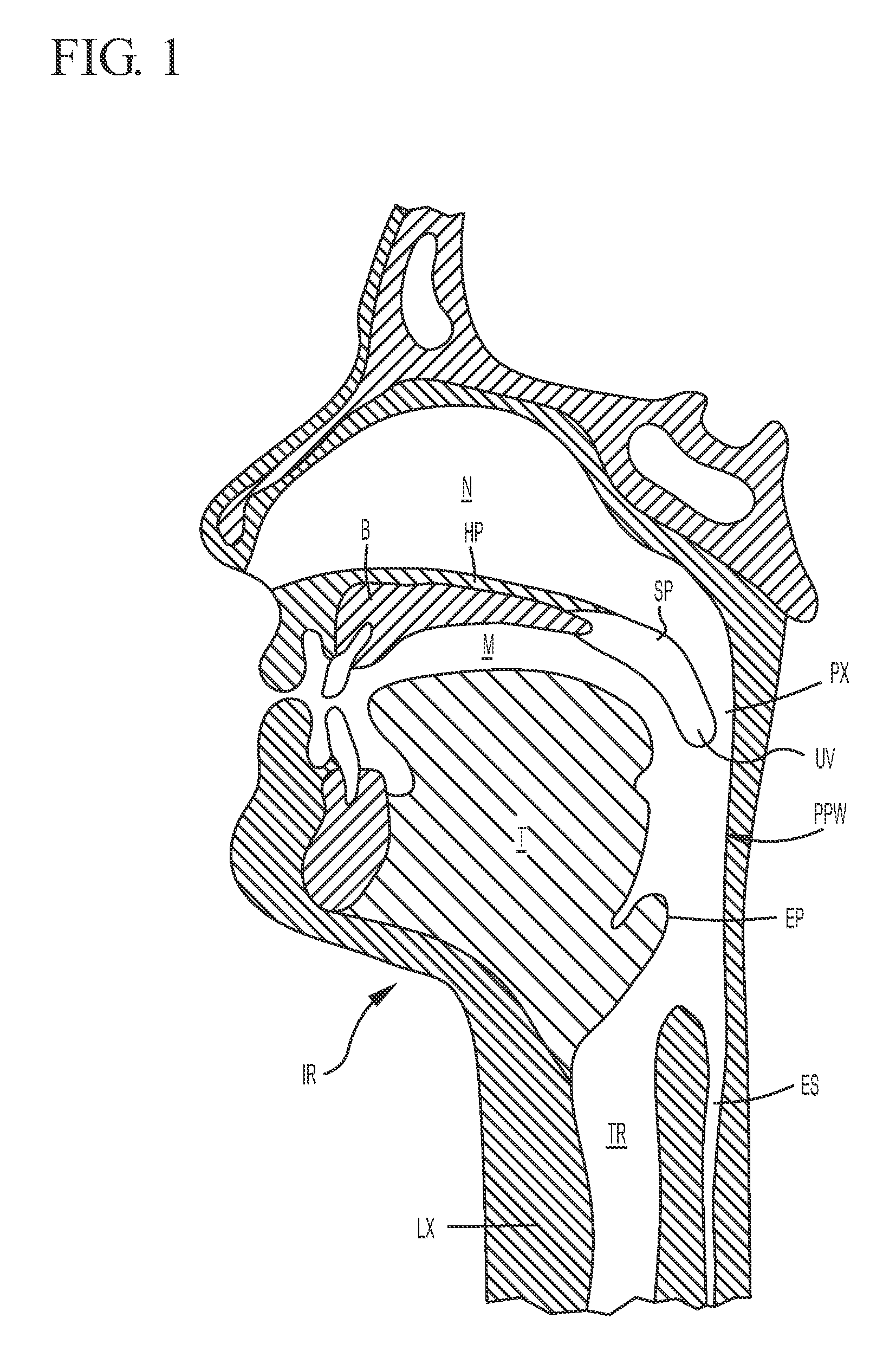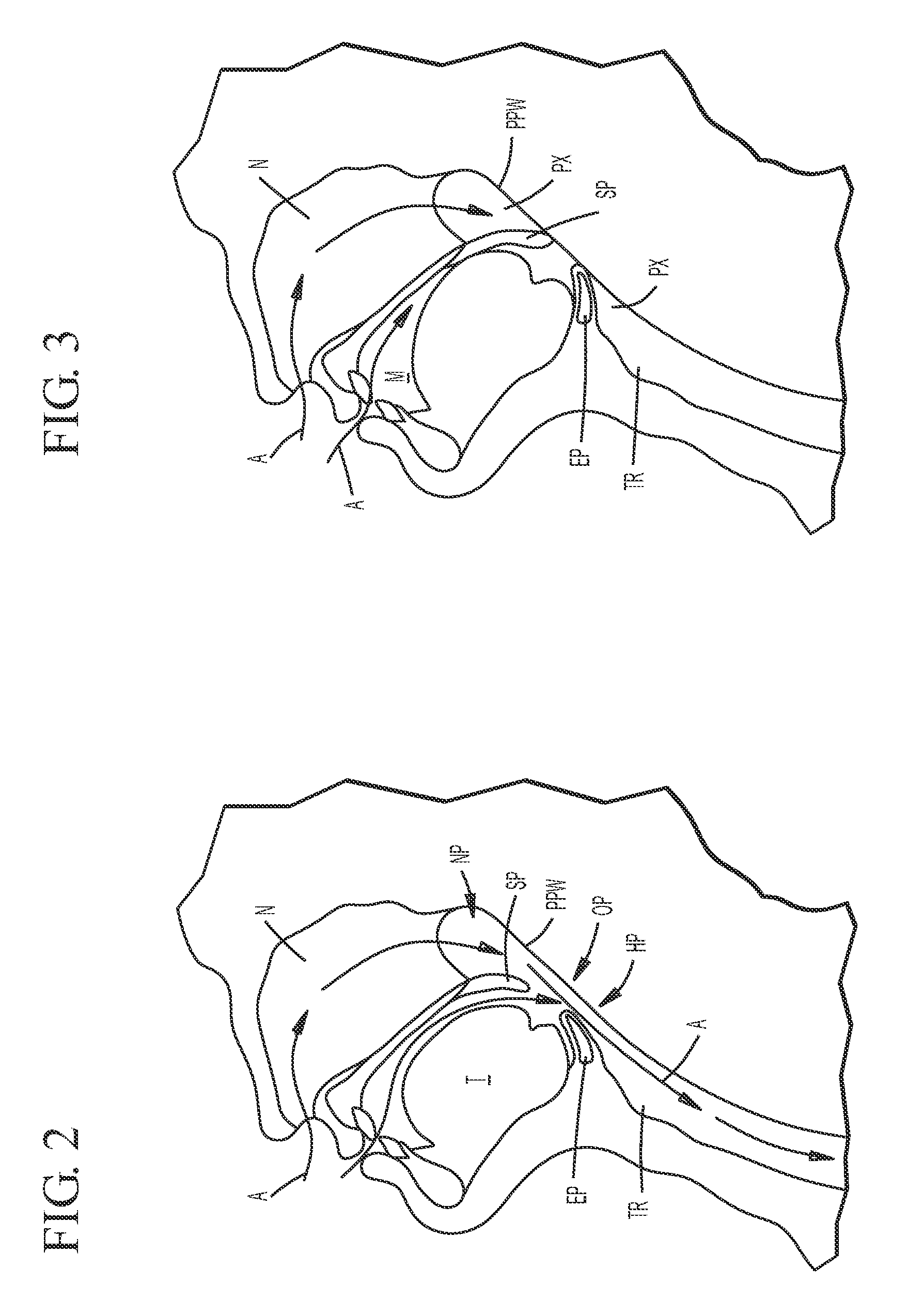Fluid filled implants for treating obstructive sleep apnea
a technology of osa and implants, applied in the field of treating sleep disorders, can solve the problems of osa sufferers remaining undiagnosed and untreated, affecting the quality of sleep, so as to achieve the effect of flexibility, rigidity and/or shape of implants
- Summary
- Abstract
- Description
- Claims
- Application Information
AI Technical Summary
Benefits of technology
Problems solved by technology
Method used
Image
Examples
Embodiment Construction
[0051]FIG. 1 shows a cross-section of a human head with anatomical structures including the nasal cavity N, bone B of the hard palate HP, the soft palate SP including the uvula UV at the posterior end thereof, the mouth M, the tongue T, the trachea TR, the epiglottis EP, the esophagus ES, and the posterior pharyngeal wall PPW.
[0052]In a human body, an air filled space between the nasal cavity N and the larynx LX is referred to as the upper airway. The most critical part of the upper airway associated with sleep disorders is the pharynx PX. Referring to FIG. 2, the pharynx has three different anatomical levels. The nasopharynx NP is the upper portion of the pharynx located in the back of the nasal cavity N. The oropharynx OP is the intermediate portion of the pharynx containing the soft palate SP, the epiglottis EP, and the curve at the back of the tongue T. The hypopharynx HP is the lower portion of the pharynx located below the soft tissue of the oropharynx OP. The oropharynx OP is...
PUM
 Login to View More
Login to View More Abstract
Description
Claims
Application Information
 Login to View More
Login to View More - R&D
- Intellectual Property
- Life Sciences
- Materials
- Tech Scout
- Unparalleled Data Quality
- Higher Quality Content
- 60% Fewer Hallucinations
Browse by: Latest US Patents, China's latest patents, Technical Efficacy Thesaurus, Application Domain, Technology Topic, Popular Technical Reports.
© 2025 PatSnap. All rights reserved.Legal|Privacy policy|Modern Slavery Act Transparency Statement|Sitemap|About US| Contact US: help@patsnap.com



